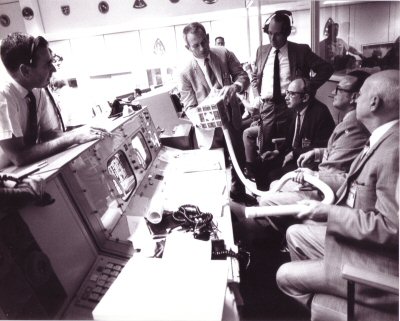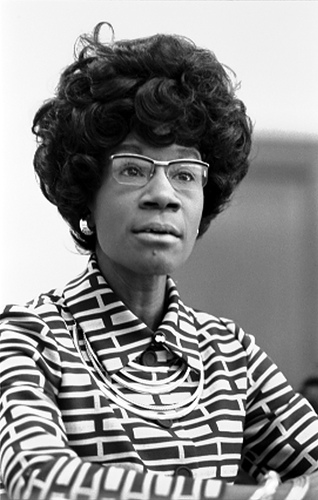
The Year of Living Exponentially
I’m a collage artist. I enjoy scissors, paper and glue. Always, I am trying to communicate something through my collage pieces.
Not all of my collages have a name, but this one does: It is “The Year of Living Exponentially.” It illustrates my tribute to nine notable innovators.
It’s a valentine, a winter bouquet, a gift for my readers and a tribute to my muses, leaders, and mentors. For me, it was a winter meditation.
I also practice another art: Cloud Alchemy. It is described in my manifesto by that name. The alchemy is putting people together in dynamic ways, talking about them with my readership, juxtaposing different energies in the “global brain.” In this collage, I’ve taken the nine notables and put them together as an art piece along with the stories I’ll tell about them.
The Nine Notables
The following are nine among many who have lit my path:
Janet Tokerud:

——————————————————————————————
A web professional since the early 80s, Janet continues to inform her audience in a multitude of ways. I enjoy her intelligent reviews of new products, her enthusiasm about the culture of the web, and her grounded support of my own projects. Janet attended the first meeting of B.A.B.S. (Bay Area Bloggers Society) and is one of the reasons I went forward with it. Follow her on Twitter as @tokerud, and her blog on http://tokerud.com.
——————————————————————————————-
Dr. Ellen F. Weber

——————————————————————————————-
Dr. Weber is a neuroscientist I have come to know on Twitter. She shares amazingly useful concepts about the brain and how to create leadership and learning environments which are most productive and human. Ellen contributes so much love and wisdom to the global brain through her continual high-level communication, she is like a one-person web of connective tissue. Everyone should follow Ellen. Find her on Twitter as @ellenfweber, and see her blog at http://BrainLeadersandLearners.com.
——————————————————————————————-
Barbara Bonardi

——————————————————————————————-
Barbara was one of my students in a new media class in early 2009. She has progressed at an astonishing rate, while continuing with her own art, journaling, and the process of earning a green MBA. Barbara is just getting her blog started and I am so curious to see how she will inform us all. She’s a superb example of a mature mind grabbing these tech tools and running with it. Barbara is an original member of B.A.B.S. Follow her on Twitter as @barbarabonardi.
——————————————————————————————-
Michael Phillips

——————————————————————————————-
Michael is one of my early influences. I read his book, “The 7 Laws of Money,” in the late 70s. His classic, “Marketing Without Advertising,” (now being revised for the 7th edition), taught us the culture of marketing at the deepest human level. It stands today as the best guide for marketing and led the culture of “the conversation” long before we had the tools to converse. Among his unique qualities is the ability to trigger the brain to think in a new direction. He does this on his blog, http://phillips.blogs.com/. Put your thinking cap on and take a look! Follow Michael on Twitter as @phillips1938.
——————————————————————————————-
Valeria Maltoni

——————————————————————————————-
Valeria Maltoni is another communication professional I met online. I think I was reading her vastly informative blog, Conversation Agent, before I knew her on Twitter. Every time I read something on her blog I think I should just drop everything and spend the next month reading everything she’s written. Valeria carries “the conversation” with elegance and a deep understanding of what is productive and true. You can find her on Twitter as @conversationage, and see her blog at http://conversationagent.com.
——————————————————————————————-
Catherine Grison

——————————————————————————————-
Catherine is one of the new friends I’ve made through interacting on Twitter. She has a warmth and style you just have to experience. A Parisian ex-pat, she is a Feng Shui artist who embraces the Twitter community with humor and humanity. When I need an uplifting moment, I just go look at her website. It’s a tonic for the soul, in living color. You can follow her on Twitter as @catherinegrison, and see her website at http://YourFrenchAccent.com.
——————————————————————————————-
Mark McGuinness

——————————————————————————————-
Mark is one of the creators of Lateral Action, which began as a great animated series about the role of creativity and innovation in successful business today. Before Lateral Action, I read his work on Copyblogger. Mark speaks the language of creativity and business, which makes him a potent contributor to the global brain. His art and his writing convey concepts in a simple, straightforward way that I find as reassuring as it is informative. You can follow him on Twitter as @MarkMcGuinness, and see more of his work on http://LateralAction.com.
——————————————————————————————-
Chris Brogan

——————————————————————————————-
Chris Brogan knows at least as much as anyone on the planet about how to live in a social media world with fairness and integrity. He talks about this openly in all of his material. If you want to see something really refreshing, look at his Disclosures and Relationships on the About tab of his website. When someone talks to me about values in leadership today (usually complaining that there are no values in leadership today), I point them to Chris Brogan. Chris is one of the reasons I believe we are creating a more civilized world through the employment of online communication tools. You can follow him on Twitter as @ChrisBrogan, and see his website at http://ChrisBrogan.com.
——————————————————————————————-
Liz Strauss

——————————————————————————————-
It makes me smile just to type her name. To me, Liz is a mastermind of the giant hive of minds contributing their best to “the conversation.” She created a system to honor others for their work with her Successful and Outstanding Blogger site (SOB). That’s the best kind of announcing. Liz is a model for anyone who wants to get their mind around how helping other people keeps you on the track to personal success. She’s funny, too. You can follow her on Twitter as @LizStrauss, and see her website at http://successful-blog.com.
——————————————————————————————-
I hope you will explore these fine contributors to the innovative online community. Our world is more sane, more civilized, more viable, and just better at everything because of them.
Suzanna Stinnett










